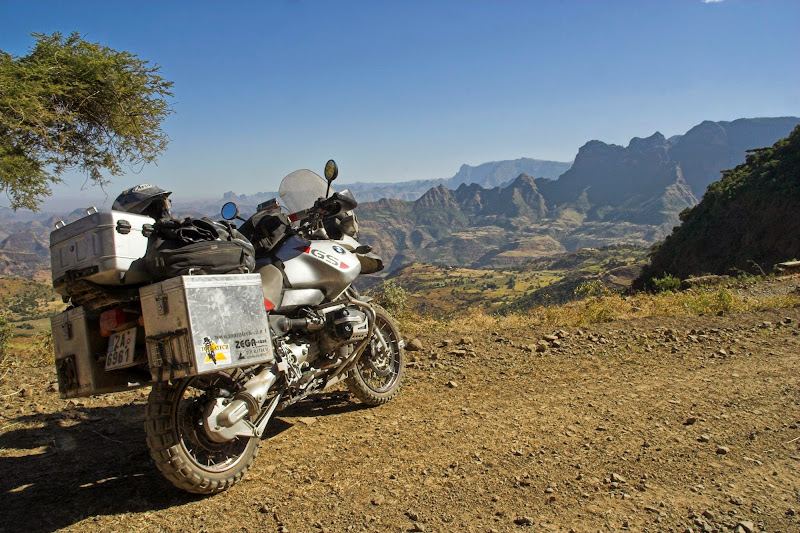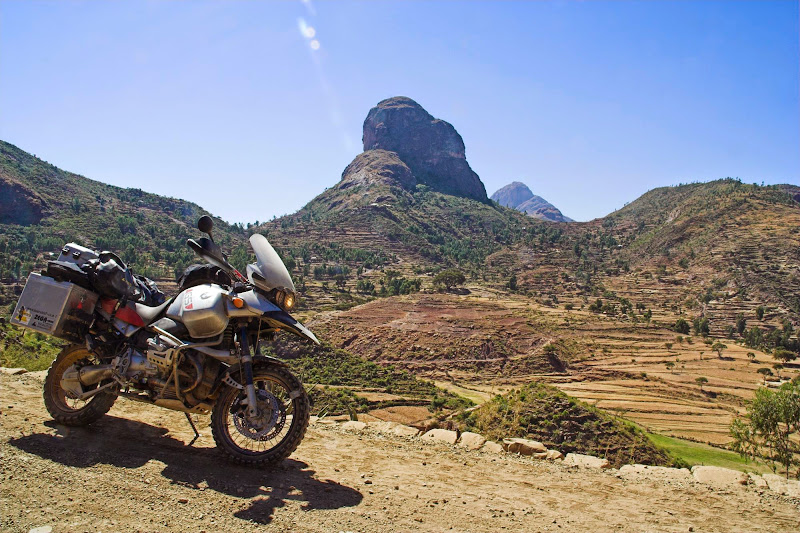JustBendIt
Grey Hound
BiG DoM said:That said - what was the contingency if one of you got a large sidewall cut?
Comfortable walking shoes and a big floppy hat to protect your pip from the sun
BiG DoM said:That said - what was the contingency if one of you got a large sidewall cut?
ClemS said:Bliksem Manne, dis nou 'n EPIC trip! As ek 10 jaar jonger was sou ek dit regtig graag wou doen!! Hats off to you all! :thumleft:
Xpat said:Any tyre insurance?eepwall:
ot:
I use the C02 on my Husky 610 and been very happy with it and good likespan :thumleft: Definately more gnarly than the E09 I use on the HP2 (you get two versions - Dakar is stronger with extra sidewall ply). That said - what was the contingency if one of you got a large sidewall cut?


Buff said:Regarding the issue of repairing the inner tube of the tubeliss system:
Theoretically it should not be a problem at all because that small tube is essentially just a bicycle tube. Most modern road bicycles have their tires pumped to between 7 and 9 bars depending on the weight of the rider. Some even go as high as 12bars with modern clinchers. I have often repaired mine and pumped them to 9 bar without any further issues.
However, that’s only when repairing pin picks from devils thorns etc. If the tube is cut from a pinch flat (which is the most likely thing on a tubeliss system) and it’s anything larger than 1 or 2mm, the repair will not hold due to the volume of air escaping onto that patch. You can try use a bigger patch and give it time to cure but time is not always an option when stuck in the field.
I totally agree with Xpat, tubes remain the best form of backup... just make sure to check your tire thoroughly for thorns before fitting it if you previously ran tubeliss because chances are you'll have one or two sticking through that the slime has plugged and they will puncture your fresh tube.
Xpat said:Buff said:Regarding the issue of repairing the inner tube of the tubeliss system:
Theoretically it should not be a problem at all because that small tube is essentially just a bicycle tube. Most modern road bicycles have their tires pumped to between 7 and 9 bars depending on the weight of the rider. Some even go as high as 12bars with modern clinchers. I have often repaired mine and pumped them to 9 bar without any further issues.
However, that’s only when repairing pin picks from devils thorns etc. If the tube is cut from a pinch flat (which is the most likely thing on a tubeliss system) and it’s anything larger than 1 or 2mm, the repair will not hold due to the volume of air escaping onto that patch. You can try use a bigger patch and give it time to cure but time is not always an option when stuck in the field.
I totally agree with Xpat, tubes remain the best form of backup... just make sure to check your tire thoroughly for thorns before fitting it if you previously ran tubeliss because chances are you'll have one or two sticking through that the slime has plugged and they will puncture your fresh tube.
Interesting Buff, didn't know that bycicles run at those kind of pressures. So can one theoretically (if the size is right and valve of course) use bicycle tube in Tubeliss?
And if the inner can be actually patched, does it mean that Justin is actually useless at patching tubes? That would explain why he had to spend almost every day lubricating rubber...
Xpat said:And the last resort - I have seen somewhere Adam Riemann to fix flat on his tubeless 1190 by stuffing tyre full with grass and riding it out. If some Aussie can do it, sure South AFricans can (the Russian would just let the South AFrican ride his bike out)!
BiG DoM said:Xpat said:And the last resort - I have seen somewhere Adam Riemann to fix flat on his tubeless 1190 by stuffing tyre full with grass and riding it out. If some Aussie can do it, sure South AFricans can (the Russian would just let the South AFrican ride his bike out)!
Ja seen the grass trick a few times :biggrin:
So I am right in saying you were also running Tubliss? (sorry you may have clarified earlier)
Dwerg said:My concern with mousse is what do you do with it after a failure? You have to carry that thing with you until you can get to a place where you can discard it. Can't stuff it in a bag and certainly can't dump it in the bush.
Xpat said:Dwerg said:My concern with mousse is what do you do with it after a failure? You have to carry that thing with you until you can get to a place where you can discard it. Can't stuff it in a bag and certainly can't dump it in the bush.
You have to lesser extent the same problem with Tubeliss, you need to pack the hard inner red liner somewhere and it is a bit unwieldy - you can see it strapped to Justin's luggage on some of the pictures. And it is quite expensive, so you might not want to discard the thing and have to carry it all the way.
armpump said:I read a folded bank note works a charm at keeping tube from popping out on side wall cut
Buff said:Regarding the issue of repairing the inner tube of the tubeliss system:
Theoretically it should not be a problem at all because that small tube is essentially just a bicycle tube. Most modern road bicycles have their tires pumped to between 7 and 9 bars depending on the weight of the rider. Some even go as high as 12bars with modern clinchers. I have often repaired mine and pumped them to 9 bar without any further issues.
However, that’s only when repairing pin picks from devils thorns etc. If the tube is cut from a pinch flat (which is the most likely thing on a tubeliss system) and it’s anything larger than 1 or 2mm, the repair will not hold due to the volume of air escaping onto that patch. You can try use a bigger patch and give it time to cure but time is not always an option when stuck in the field.
I totally agree with Xpat, tubes remain the best form of backup... just make sure to check your tire thoroughly for thorns before fitting it if you previously ran tubeliss because chances are you'll have one or two sticking through that the slime has plugged and they will puncture your fresh tube.
armpump said:




